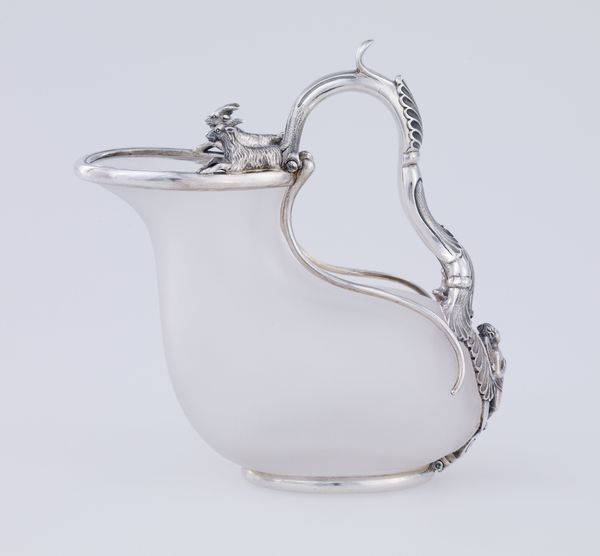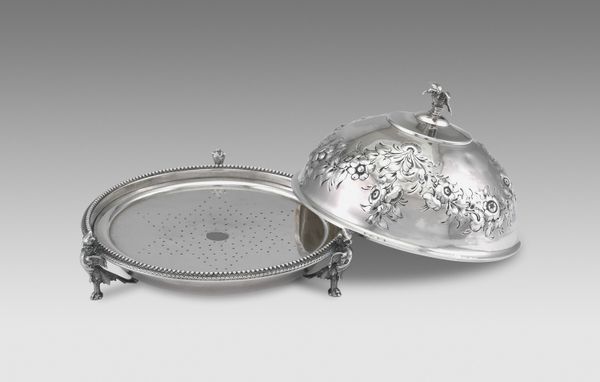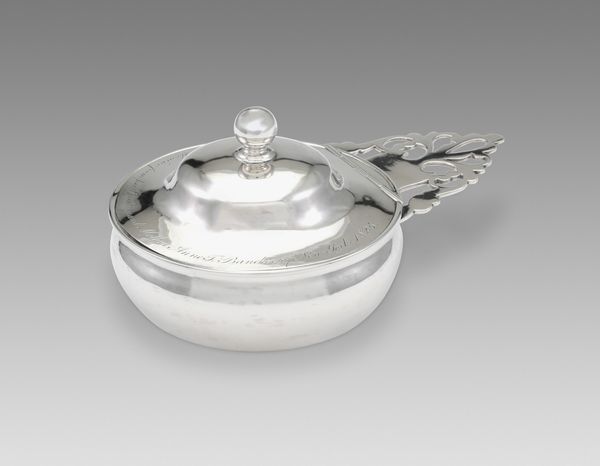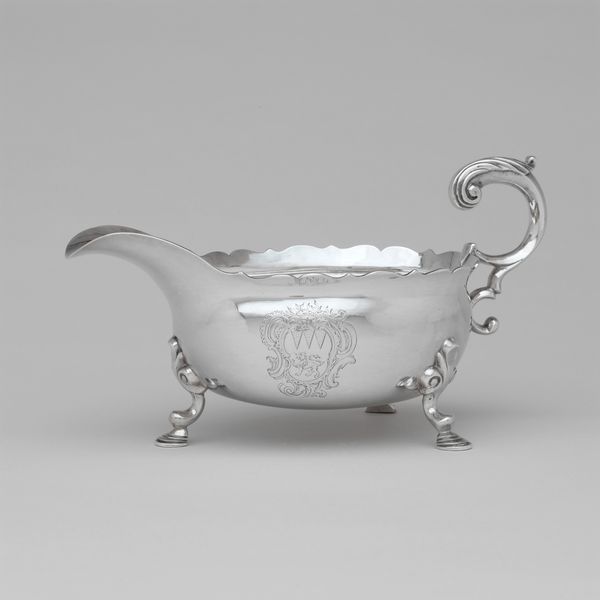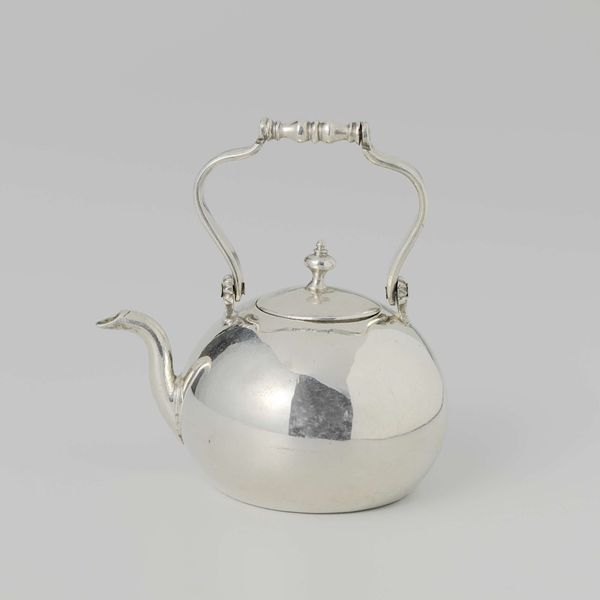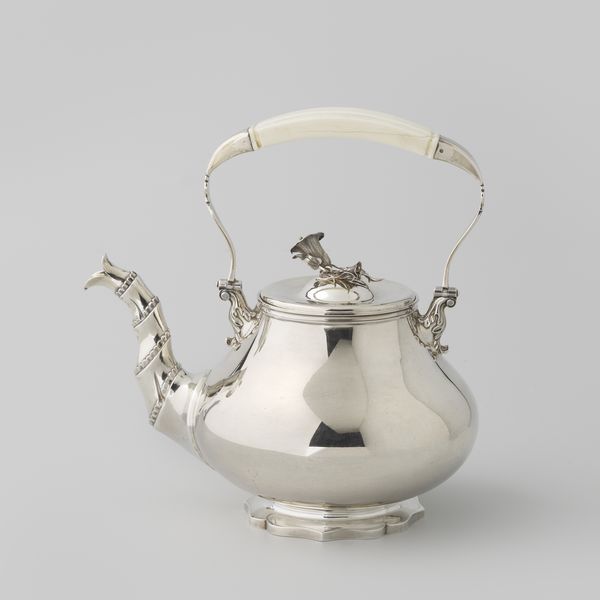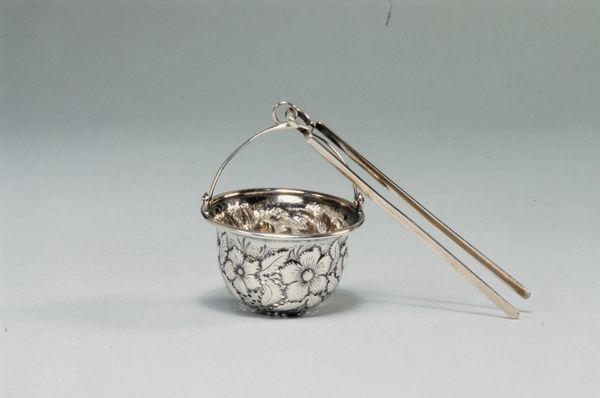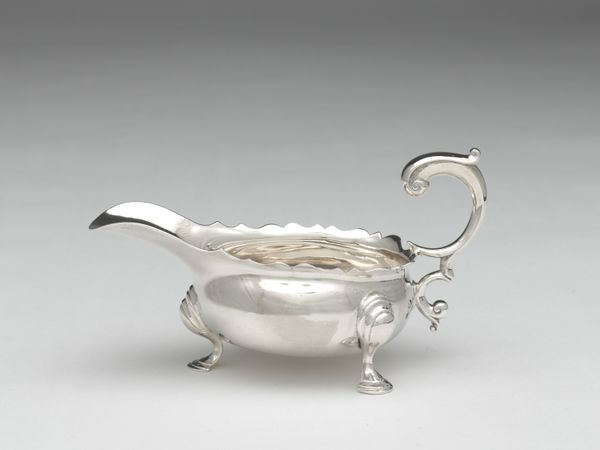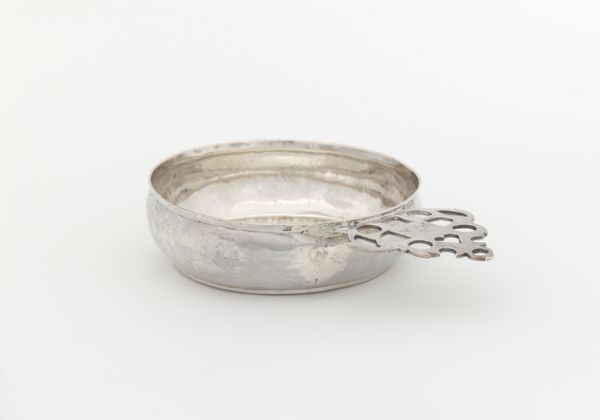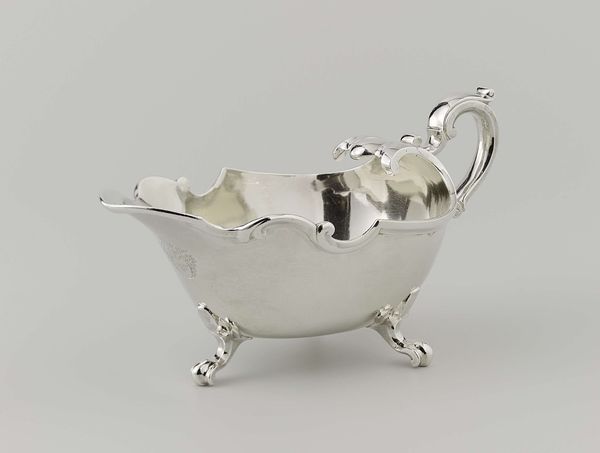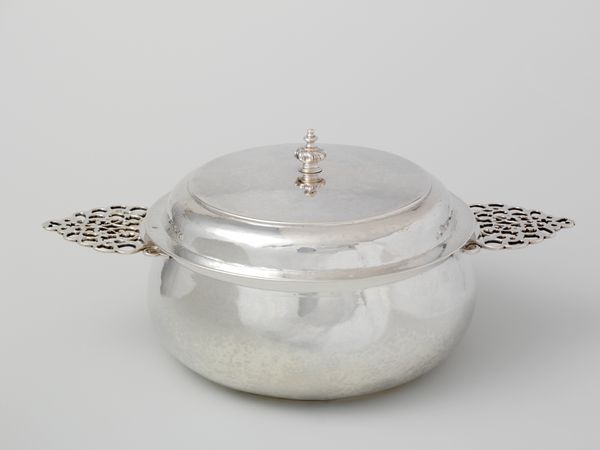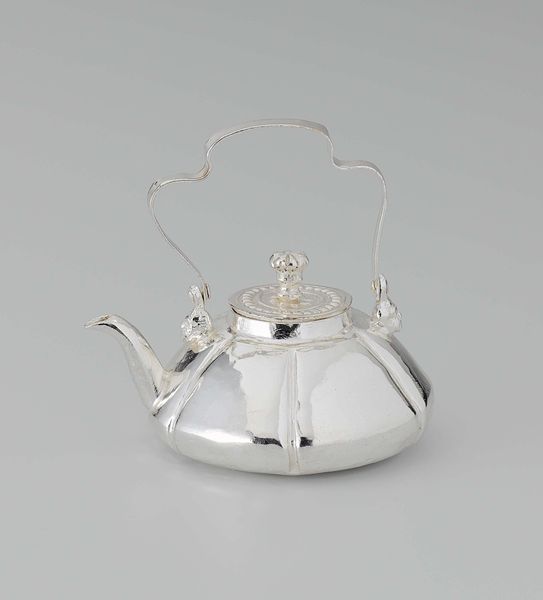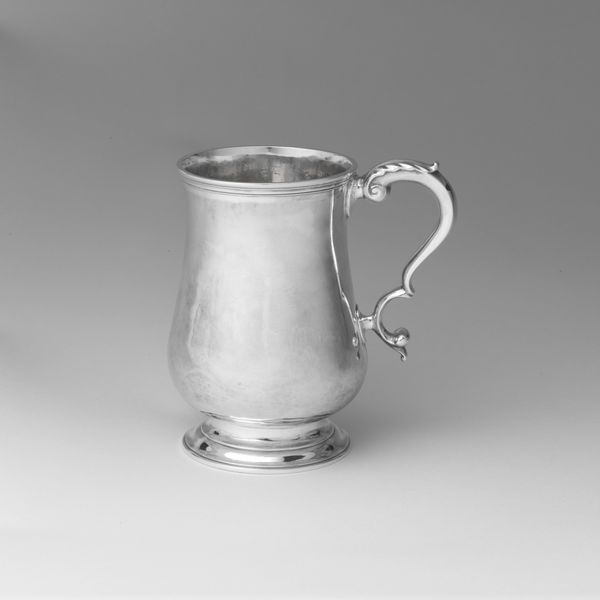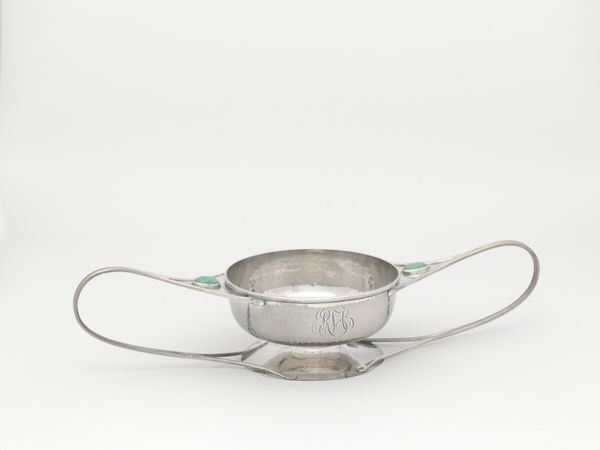
silver, metal
silver
metal
decorative-art
Dimensions: 2.5 × 6 cm (7/8 × 2 3/8 in.)
Copyright: Public Domain
Curator: This ornate object is a "Tea Strainer," made from silver, dating to between 1891 and 1896. It resides here at The Art Institute of Chicago, created by W. H. Saxton Jr. Editor: The craftsmanship immediately strikes me; it has an undeniable delicacy and, for such a functional item, there's real visual weight to it. All those flowers! Curator: Exactly! It really prompts a look at the ritual and social meanings embedded in something as simple as tea preparation in the Victorian era. We have to consider the performative aspect. This wasn’t just about a beverage; it was a site of carefully orchestrated social interaction. Editor: Yes, the labour is visible isn't it. Imagine the silversmith painstakingly crafting each tiny petal, leaf and curve. There is clearly an attention to detail, especially regarding the texture that shows expertise in handling materials; metal working that imitates forms that appear fleeting. Curator: How might gender come into play? A silver tea strainer, heavily embellished with floral designs. It suggests a certain vision of femininity, but it can also reveal anxieties around class status in relation to domesticity. Who is using this object? Editor: Right, and from where does the raw material, the silver, come? Was the production of silver ore itself impacting local populations? Curator: The context of material extraction often gets lost when admiring the finished art, I agree. So, this delicate tool isn't simply a symbol of high-class taste. It prompts us to think critically about colonialism, consumption, labour practices and identity as well. Editor: It truly demonstrates how everyday items are filled with historical stories, and what a crucial piece like this could suggest in regards to commodity networks tied with aesthetics. I am glad we investigated this one together. Curator: Me too, especially about how even domestic objects hold layers of complexity.
Comments
No comments
Be the first to comment and join the conversation on the ultimate creative platform.
